Eating for Your Body Type: Is It a Myth or the Real Deal?

When it comes to exercise and health, simple is best for most people. That’s probably one reason why eating plans with clear rules, such as Paleo or vegan, are so appealing.
Simple answers give us a better feeling of control over our lives, and the body type diet is no exception. But simple is not always “right” or better, so we must turn to the science to know what’s actually effective.
Eating for your body type started in the 1940s, and its concepts are still popular today. Whether you’ve heard of this philosophy or not, the real question is, “Does it work?” Let’s take a closer look for ourselves.
What Does Eating for Your Body Type Mean?
Eating for your body type, also known as the body type diet, is based on the theory that everyone falls into one of three inherited body types known as somatotypes. The somatotypes feature specific body compositions and skeletal frames.
Here are the three somatotypes and their definitions according to the University of Houston:
- Ectomorphs: long and lean with low body fat and muscle; often have trouble gaining weight
- Endomorphs: high amounts of fat and muscle; can gain weight easily
- Mesomorphs: athletic, strong, and solid; not underweight or overweight and can lose or gain weight easily
The idea behind the diet is each body type has specific characteristics that impact how the person processes macronutrients, handles exercise, holds weight, and moves throughout the world. The body type diet includes diet and exercise recommendations based on one’s somatotype.
For example, ectomorphs’ lower body fat percentages and high strength-to-bodyweight ratios often mean they are better at long-duration aerobic exercise than the other body types.
In the same way, the body type theory would say that since endomorphs carry more muscle and fat, they do best with heavy weight-lifting exercises, such as powerlifting or CrossFit.
The History of Eating for Your Body Type
The term somatotype came from an American psychologist named William Herbert Sheldon, who developed the classifications of body types in the 1940s.
Sheldon not only created three categories of physical body type but also associated different personality traits with each. He used numerical scores to predict characteristics like:
- Ectomorphs: quiet, restrained, introverted
- Endomorphs: friendly, relaxed, cheerful
- Mesomorphs: assertive, active, competitive
However, Sheldon’s body type theory and associated traits have been discredited. Studies have not been conclusive, and we know that many factors determine someone’s body composition and personality.
There is a more modern version of eating for your body type, though. The Heath-Carter Method created by Barbara Honeyman Heath Roll and Lindsay Carter uses ten skinfold measurements to score by body type, including:
- Body mass (weight)
- Stature (height)
- Triceps
- Subscapular
- Supraspinal
- Medial calf
- Biepicondylar breadth of the humerus
- Biepicondylar range of the femur
- Upper arm girth
- Calf girth
Measurements must be accurate and reliable to provide helpful information based on body type. This method also widens the umbrella of body types, acknowledging that people can fall into two categories to different degrees. This is important, as everyone is different with slightly varying needs.
Is There Any Research Behind the Body Type Diet?
There isn’t a lot of research to support the idea that fitting into one somatotype will determine someone’s ideal diet and exercise routine. Here’s what we know:
A 2018 study on physically active males found a link between somatotype and anaerobic exercise. It found that one or more aspects of somatotype predicted at least one-third of one’s strength performance.
The study found those high on the mesomorph scale tended to have better strength performance. It also found those with high mesomorph and ectomorph characteristics tended to have better strength performance in the lower body.
Another study from 2015 established the somatotypes of 72 young male football players, kayakers, and basketball players ages 18 to 24. Each group included elite, international-level, and low-level athletes.
The study found that for the elite athletes, the mesomorphy range was highest in the kayakers, mid-range for basketball players, and lowest for football players. Also among the elite athletes:
- The kayakers were mostly endomorphic.
- The football players were mostly ectomorphic.
- The basketball players were mostly endomorphic.
The study didn’t find any noticeable somatotype patterns for the low-level athletes.
It also concluded that the analysis of a body’s form (known as morphometrics) in athletes could be “used as guiders and markers of the chosen sport and method of training.”
In addition, a 2017 paper analyzed three-day food diaries from almost 150 women above the age of 57. The results showed that physical activity, location, disease risk, special diets, BMI, and weight fluctuations were “statistically significantly” associated with somatotype.
The study results also showed a significant effect of somatotype on animal protein, total protein, and vitamin E intake.
Overall, there’s not enough research to show that eating for your body type is a cure-all or guarantee for excellent health. Most people’s bodies fall somewhere between the different somatotypes and their recommendations. For most of us, eating based on body type isn’t necessary. Focusing on general dietary guidelines for healthy eating, weight loss, and muscle building is better.
Body type eating can also make being healthy more complicated and confusing. It adds more rules and layers for someone to cross when trying to lose weight, gain muscle, and be overall healthy.
What About Eating for Your Blood Type?
The blood type diet, created by naturopath Peter J. D’Adamo, claims that our bodies react differently to specific foods based on our blood type. While this idea might seem intriguing, there doesn’t appear to be strong evidence supporting it.
For example, one 2020 study found that eating D’Adamo’s Type A diet, which is mainly plant-based, improved weight and cholesterol markers for all participants — not just those with type A blood.
Benefits of Eating for Your Body Type
While body type eating lacks evidence, there are some pros to it. Understanding your body type can help you see how your physical attributes relate to diet and fitness. Plus, specific body types tend to have similar metabolic and physiological strengths or weaknesses.
That said, there are different exercise routines that might help someone based on their body type. If you're a fan of the body type theories, here's some practical fitness advice through the lens of each somatotype.
Training and Exercise Based on Your Body Type
While body typing is controversial, it might be helpful in some instances related to fitness. Understanding your type could help you build realistic goals and avoid unfairly comparing your body’s results to someone else’s with a different body type.
Here are some suggestions for training based on the different somatotypes.
Training as an Ectomorph
Ectomorph bodies tend to be long, lean, and low in body fat and muscle with “lanky” figures.
People with high ectomorphy tend to have high metabolisms and struggle to gain lean muscle. Their training routines should therefore focus on building strength and muscle through hypertrophy while focusing less on cardio activities.
Ectomorphs who want to build mass could focus primarily on anaerobic exercises — lifting heavier with more extended rest periods. They can also replace some cardiovascular exercises with weight and resistance training.
Those with ectomorph-like bodies can also focus on eating for muscle gain. Since they have higher metabolisms, they often need to eat more calories.
According to the National Academy of Sports Medicine (NASM), that typically means denser foods, nutritional shakes, and plenty of protein — 1.2 to 1.6 grams (and sometimes up to 2.2 grams) per kilogram of body weight per day. A balanced intake of carbs, protein, and fats tends to be best.
Ectomorphs might also need to eat more regularly instead of spacing their meals out too much. Eating more frequently — at least every 3-4 hours — helps keep caloric intake high enough while maximizing protein intake.
In summary, for training as an ectomorph:
- Prioritize exercise focusing on muscle gain, such as higher weight, lower rep resistance training, and lower-intensity hypertrophy workouts.
- Eat a high-protein diet that balances carbs and fats, getting enough calories to trigger muscle growth.
Training as an Endomorph
Endomorph bodies tend to have a higher body fat percentage with less muscle mass and a rounder shape. Since endomorphs tend to be more sensitive to caloric intake, they often must be more careful about weight gain.
The best exercise programs for endomorphs typically prioritize fat loss and heart health. That means:
- Consistent weight training aimed at improving strength and stabilization
- Cardiovascular exercises focused on metabolic conditioning, such as high-intensity interval training (HIIT), and steady-state cardio
- Short rest periods in between sets
These exercises can help train the body to burn calories more efficiently. Endomorphs can also support their health by looking for opportunities to fit in exercise throughout the day, not just during their time in the gym.
Eating for body type as an endomorph could also mean the need for fewer calories than the average person. Endomorphs can benefit from a nutrient-dense, whole foods-based diet with plenty of fiber. Sufficient protein intake — up to 2.2 grams per kilogram of body weight — is also ideal. For weight loss, the goal is to be consistently in a slight energy deficit while still eating enough to minimize muscle breakdown.
In summary, here are general guidelines for training with an endomorph body:
- Focus on exercise that maximizes calorie burn and muscle building, such as high-intensity training.
- Eat a balanced diet with a focus on whole foods and protein-rich foods.
- Maintain a slight calorie deficit for weight loss.
Training as a Mesomorph
Mesomorphic bodies are muscular, athletic, broader in the shoulders, and narrower in the hips and waist areas. In terms of fitness and weight management, mesomorphs tend to be between the other two somatotypes and sometimes have things easier.
Some research has shown a link between mesomorphy and power position athletes, such as volleyball setters, basketball guards, and heavy lifters. They’re already more athletic, so adapting to a training program tends to come more easily.
According to NASM, mesomorph bodies are often better suited to advanced training levels. (However, everyone is different, and workouts will depend on each person’s goals.) People with more mesomorphic bodies might be more fitting for CrossFit or other athletic-level training. These can emphasize moderate-to-heavy lifting and high-intensity cardiovascular activities.
Food should prioritize nutrient density with 1.2 to 2.2 grams per kilogram of body weight for protein and a balance of carbs and fats. Mesomorphs can change caloric intake and nutrient ratios as needed to meet their health and fitness goals.
In summary:
- Tailor exercise based on fitness goals, increasing intensity for those already active.
- Eat 1.2 to 2.2 grams of protein per kilogram of body weight for muscle gain. Keep carbs and fats balanced, as well.
- Adjust eating as needed to support fitness and health goals.
What to Do Instead of Eating for Your Body Type
As you can see, broad guidelines can help when considering what food and exercise are best for you. But the body type diet is not a tried-and-true option for everyone.
Instead, knowing your own body’s tendencies — like holding onto weight quickly or struggling to build muscle well — will help you know what you need help with most.
Instead of following a body type diet or training just based on your somatotype, make sure your health and training habits are based on what we know about weight loss and building muscle.
With diet specifically, it helps to consult a professional dietitian to ensure you eat for your needs. For exercise, focus on your goals first when building a training program. Do you want to lean out? Get bulkier? Improve your muscle tone? Be fit enough to play with your kids and not be out of breath after walking up your stairs?
Knowing your goals — whether small or large — will help you know where to start with eating and working out. Hiring a professional, joining an online workout program, and using an all-in-one at-home system can help guide you in the right direction for your goals.
Can You Change Your Body Composition Through Diet and Exercise?
It can feel like your body type limits your health and fitness. This is especially true if you believe in theories like eating for your body type. However, we know that consistent training and healthy habits can affect body composition.
The hardest part is making a change, which can be particularly challenging initially. But consistent habits to build lean muscle and maintain a healthy weight can develop a new “normal” for your body. Our bodies are highly adaptable, meaning healthy levels of exercise and eating well can become a natural part of life.
As appealing as relying on a specific type of eating for your body can be, the better approach is to develop healthy habits that you can continue over time. In addition, consulting professionals or following online workouts led by professionals (like those on Gorilla Bow All-Access) can give you more targeted results no matter your body type.
References
- https://www.uh.edu/fitness/comm_educators/3_somatotypesNEW.htm
- https://www.britannica.com/science/somatotype
- https://www.mdthinducollege.org/ebooks/statistics/Heath-CarterManual.pdf
- https://www.ncbi.nlm.nih.gov/pmc/articles/PMC5963773/
- https://www.sciencedirect.com/science/article/pii/S1010660X15000518
- https://www.researchgate.net/publication/322142687_Somatotype_diet_and_nutritional_status_of_women
- https://www.dietaryguidelines.gov/sites/default/files/2020-12/Dietary_Guidelines_for_Americans_2020-2025.pdf
- https://www.jandonline.org/article/S2212-2672(20)31197-7/fulltext
- https://blog.nasm.org/fitness/body-types-how-to-train-diet-for-your-body-type
- https://pubmed.ncbi.nlm.nih.gov/11447371/
- https://pubmed.ncbi.nlm.nih.gov/16194982/
- https://pubmed.ncbi.nlm.nih.gov/29787610/


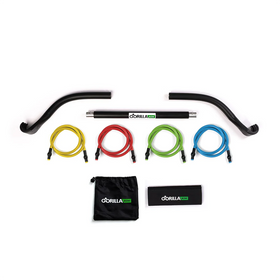
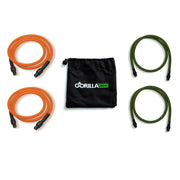
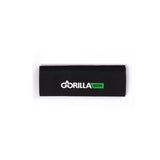
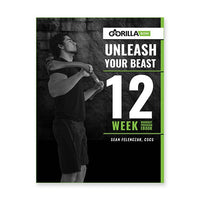
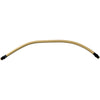


Leave a comment